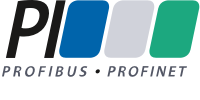Project
As the coal mining industry’s workhorse, the dragline is core to an open-cut mine’s operation, moving massive amounts of overburden 24 hours every day throughout the year. Draglines scoop up overburden and typically swing it around a 100-degree arc before dumping the load and returning to the original position. Managing this process requires large and complex DC relay logic, and at most sites, the electrical setup has remained unchanged over decades. This makes it difficult for dragline operations to truly benefit from modern communication systems.
However, many of the draglines in Australia have been undergoing major overhauls and electrical upgrades, presenting the opportunity to implement more advanced automation, protection and control systems.
Solution
A coal mining company in Central Queensland, BMACO, undertook a trial to implement a PROFIBUS network on a machine to assess the viability of this communication protocol in the harsh dragline working environment. 'Since this trial was the first such known installation in the world, we built in full hard-wired redundancy for the PROFIBUS network,' explains Andrew Guilbert, Manager Electrical Engineer, INETE P/L.
The network was implemented using a GE Fanuc PLC CPU with five Siemens DC Simoreg Drives and a Siemens AC Masterdrive. It was initially commissioned to communicate at 500 kbps, and once proven, was set to run at the maximum PROFIBUS baud rate of 12 Mbps. 'The trial was a huge success and PROFIBUS has now been adopted as a standard for communications between the controlling PLCs and the motion drives,' says Guilbert. 'The redundancy has been stripped out of the machine, effectively making the PROFIBUS network the life blood of the machine.'
Conclusion
The upgrade has freed up valuable space in the electrical switch rooms. It also provides simplicity in modifying control and enhancing automation and enunciation of the dragline without additional hardware controls to be installed. The robustness and speed of the PROFIBUS has resulted in it being implemented on seven more draglines. 'If a dragline is undergoing a major electrical upgrade, this would be the most appropriate time to consider implementing PROFIBUS, especially where large amounts of data needs to be move around reliably and fast,' concludes Guilbert.
Case Studies
PROFIBUS adopted as standard in dragline control (Australia)
PNO,


